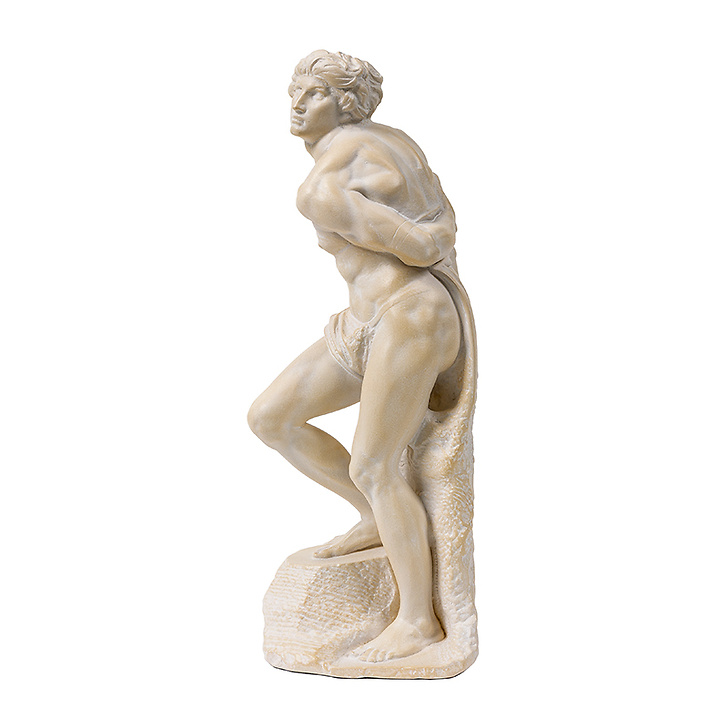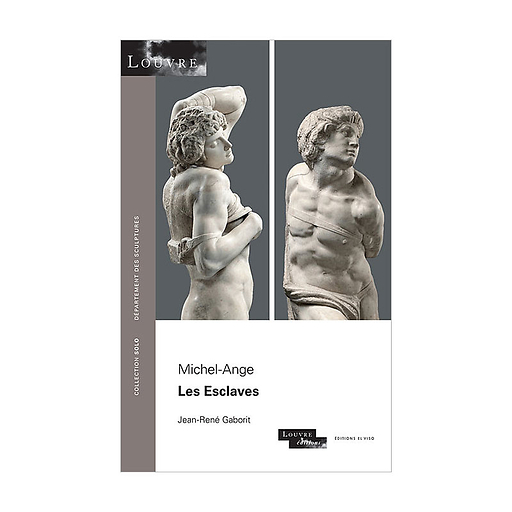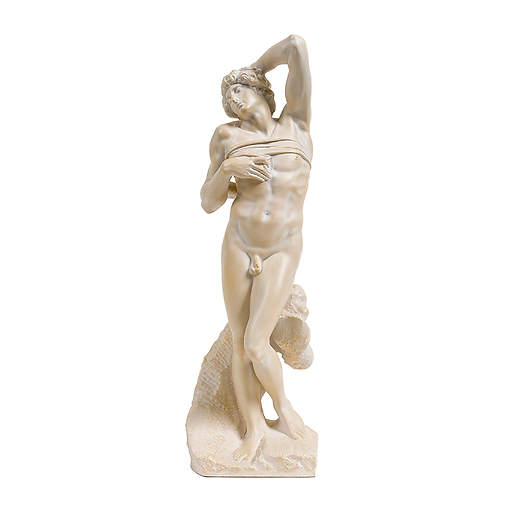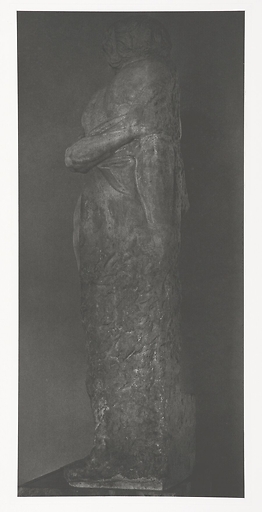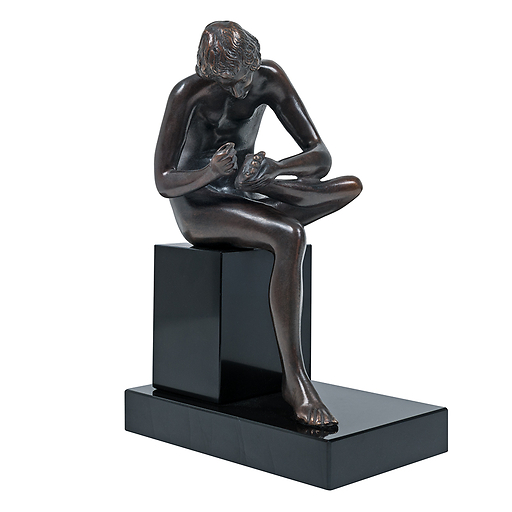This casting is a reproduction of a sculpture by Michel Ange Buonarroti exhibited in the Musée du Louvre.
Created circa 1513-1514 by Michelangelo Buonarroti (Florence 1475-Rome 1564) - Paris, Musée du Louvre
Rmn-GP cast from the original marble - Reduction patinated by hand
Gift from Robert Strozzi...
Read more
This casting is a reproduction of a sculpture by Michel Ange Buonarroti exhibited in the Musée du Louvre.
Created circa 1513-1514 by Michelangelo Buonarroti (Florence 1475-Rome 1564) - Paris, Musée du Louvre
Rmn-GP cast from the original marble - Reduction patinated by hand
Gift from Robert Strozzi to the king of France
Then given by Henry II to Anne de Montmorency
At the Château d'Écouen until 1632, then Collection of the Cardinal de Richelieu, Paris, until 1793, entered the Louvre in 1794
Intended for the tomb of Pope Julius II (1441-1513) but ultimately left unused, the two figures of slaves sculpted by Michelangelo have sparked various interpretations since the Renaissance. They undoubtedly represent not slaves, but prisoners. They may personify the provinces brought under rule by Pope Julius II through his different campaigns. They may also symbolise the arts which, upon the death of the pontiff, lost their patronage and were no longer able to flourish. The Dying Slave appears resigned to his fate. Calm and serene, he appears to die as if gently falling asleep, which is why the piece is sometimes called "Sleeping Slave".
For two centuries, the artisans of the Rmn-GP casting workshop have lent their unique expertise to one of the largest and most prestigious collections of casts produced from the originals to revive masterpieces of sculpture from antiquity to the present day.
This reproduction was produced using the 3D technique. The original sculpture was scanned then reproduced through 3D printing. The volume was precisely recreated to the closest micrometre.
Care: use a dry cloth or feather duster only - Do not expose to sources of direct heat or excessive
Close

